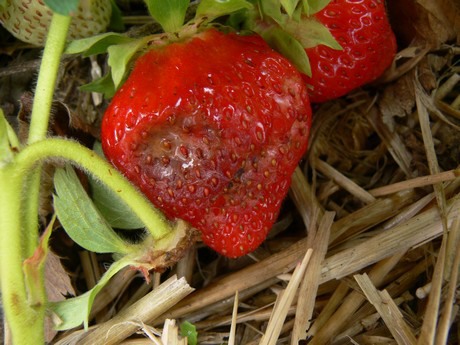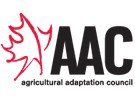Production of day neutral strawberries in Ontario is increasing as part of the berry industry’s efforts to extend the growing season. However, these ever-bearing berries have different disease management needs than the traditional June-bearing strawberries.
Strawberry anthracnose has caused considerable crop losses for Ontario berry growers over the last several years; the fungus causes rot and makes the berries unsaleable. Treatment options are limited and fungicide resistant strains of the disease have been found in the province.

A predictive model for strawberry anthracnose fruit rot was developed in Florida to help growers predict when they should and shouldn’t be treating their berry crops. The model was validated under Ontario conditions in 2016 and 2017, but berry growers are hesitant to adopt the technology because of cost and unfamiliarity with the model.
Now, with funding support from the Canadian Agricultural Partnership (the Partnership), Berry Growers of Ontario (BGO) is field testing the model with commercial growers at five locations across the province.
“Through the Canadian Agricultural Partnership, we are helping to ensure that farmers have access to the tools and resources they need to predict and mitigate risks,” said Lawrence MacAulay, Federal Minister of Agriculture and Agri-Food. “Collaborative, in-field testing is important to support the adoption of innovative approaches to crop management, while also looking towards the long-term sustainability and profitability of the sector.”
“Our farmers are always working to improve on the great foods they bring to the market. Through the Partnership, we’re pleased to support efforts to help these hard-working producers address challenges along the way. Protecting the health of plants that provide food will help the sector thrive,” said Ernie Hardeman, Ontario’s Minister of Agriculture, Food and Rural Affairs.
“This model predicts when you should be treating your strawberries. We hope this will offer better control of the disease and reduce costs for growers through more targeted application,” said BGO Executive Director Kevin Schooley.
“Based on our initial testing, we think it works, but now we’re bringing it to the practical level and into the hands of growers to see if and how it works in the field,” he added.
The goal is to assess the costs and benefits of adopting this new technology, as well as promoting sustainable production through the use of disease forecasting models to specifically target fungicide applications.
Participating growers will be sharing their experiences with the larger berry industry at the 2020 Ontario Fruit and Vegetable Convention.
“We’re hoping to get grower comfort level with the technology and develop something that they’ll have confidence in so we can do a better job of disease management,” Schooley said. “Without the Partnership funding, we could maybe do two test sites instead of the five we are doing; it’s important to test this across the province so we get a good sense of the benefit it will offer the industry.”
For more information: Agricultural Adaptation Council
Agricultural Adaptation Council
381 Elmira Road North, Unit 1
Guelph, ON N1K 1H3
P: 519-822-7554
F: 519-822-6248
adaptcouncil.org
